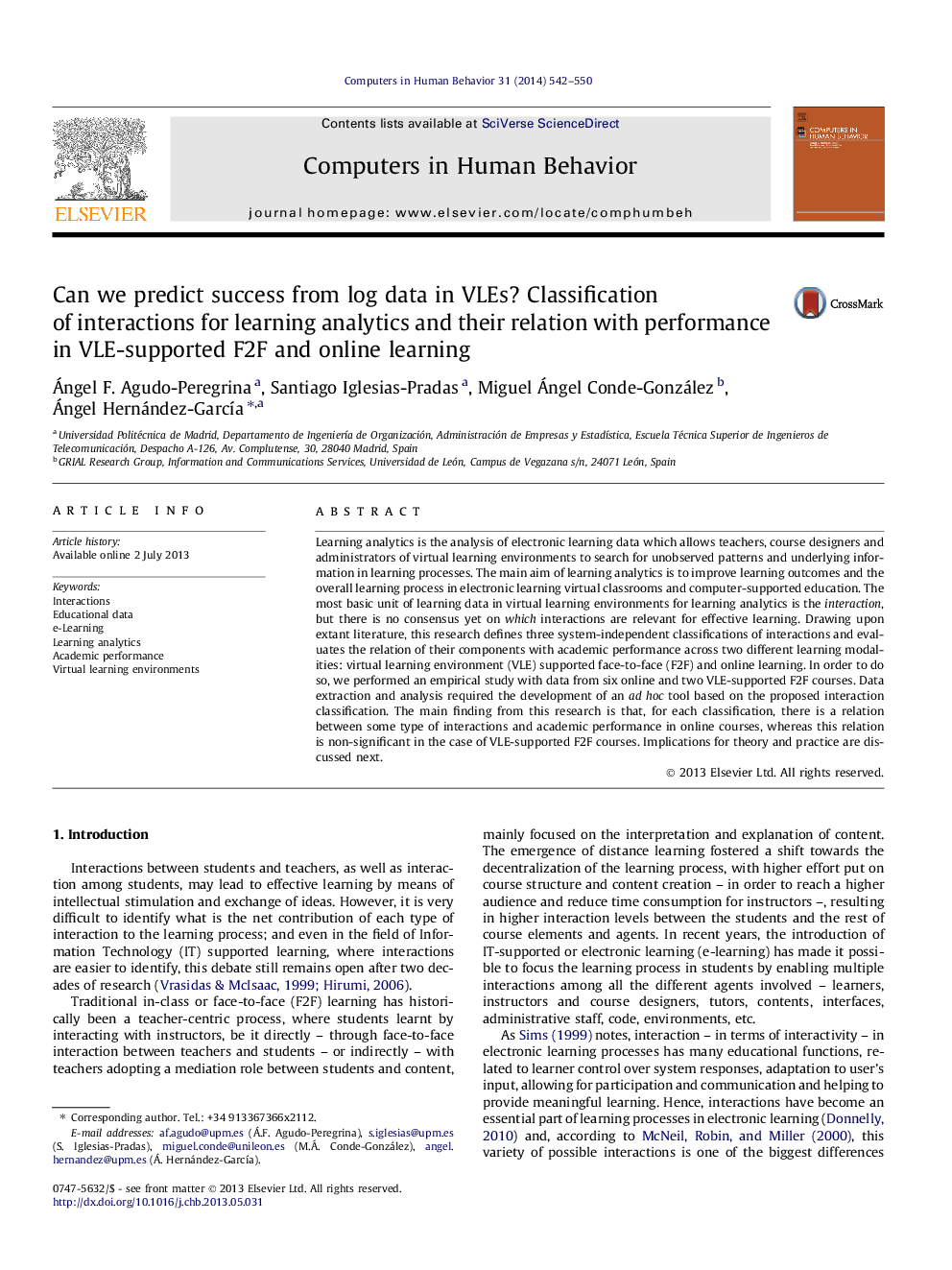| Article ID | Journal | Published Year | Pages | File Type |
|---|---|---|---|---|
| 6839566 | Computers in Human Behavior | 2014 | 9 Pages |
Abstract
Learning analytics is the analysis of electronic learning data which allows teachers, course designers and administrators of virtual learning environments to search for unobserved patterns and underlying information in learning processes. The main aim of learning analytics is to improve learning outcomes and the overall learning process in electronic learning virtual classrooms and computer-supported education. The most basic unit of learning data in virtual learning environments for learning analytics is the interaction, but there is no consensus yet on which interactions are relevant for effective learning. Drawing upon extant literature, this research defines three system-independent classifications of interactions and evaluates the relation of their components with academic performance across two different learning modalities: virtual learning environment (VLE) supported face-to-face (F2F) and online learning. In order to do so, we performed an empirical study with data from six online and two VLE-supported F2F courses. Data extraction and analysis required the development of an ad hoc tool based on the proposed interaction classification. The main finding from this research is that, for each classification, there is a relation between some type of interactions and academic performance in online courses, whereas this relation is non-significant in the case of VLE-supported F2F courses. Implications for theory and practice are discussed next.
Related Topics
Physical Sciences and Engineering
Computer Science
Computer Science Applications
Authors
Ángel F. Agudo-Peregrina, Santiago Iglesias-Pradas, Miguel Ángel Conde-González, Ángel Hernández-GarcÃa,
